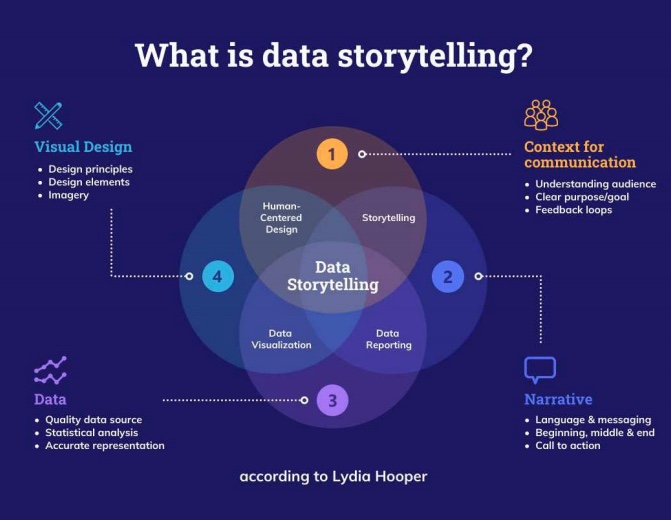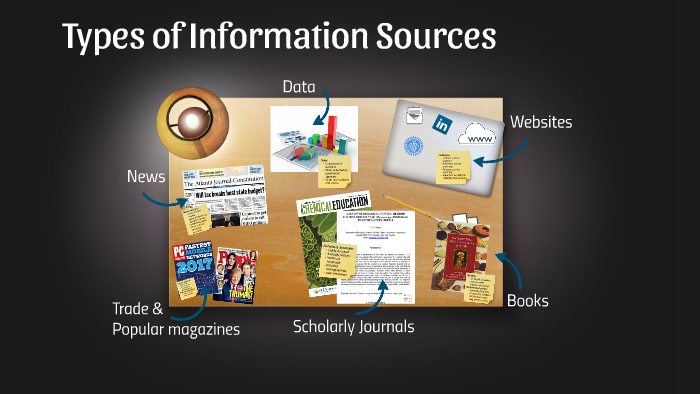Online Research for Solopreneurs, Bloggers and Content Creators
Finding the right information when writing blog posts is a major challenge for many solopreneurs. According to the 11th Annual Blogger Survey by Orbit Media, blog posts with quotes and statistics have better traffic and engagement than those with just images.
And that requires thorough online research.
Good research helps you create content that stands out in a crowded online space. So let’s go through the practical ways to research for a blog post or other content, including how to:
- Find reliable information quickly,
- Organize your findings, and
- Turn your research into engaging content your audience will value.
Contents
Why Good Research Matters for Your Blog
How quality research builds your credibility with readers
When you publish a blog post, you’re asking readers to trust your expertise. But in general, blogs aren’t considered credible sources by academic standards.
Why? Because unlike academic publications, blogs typically don’t go through rigorous peer review or fact-checking processes. This is why thorough research matters so much.

Quality research helps bridge this credibility gap. When readers see that you’ve backed up your claims with data, expert opinions, and reliable sources, they’re more likely to trust what you have to say.
63% of readers consider blogs with multiple authors to be more credible than one single source. This suggests that diverse perspectives and expertise from good research directly impact how trustworthy your audience finds your content.
Think about it–would you trust health advice from someone just sharing personal opinions, or from someone who quotes medical studies and expert physicians?
The connection between well-researched content and better search rankings
Search engines like Google are constantly improving their ability to identify and reward quality content. Did you know that simply having a blog increases your chances of ranking higher in search results by 434%? Now imagine what happens when that blog is backed by well-researched, accurate content.
When you research thoroughly, you naturally:
- Include relevant keywords
- Answer specific questions your audience is asking
- Cover topics comprehensively.
These factors show search engines your content is valuable.
Well-researched content also tends to earn more backlinks from other reputable websites, which remains one of the strongest SEO ranking factors. When other site owners see you’ve done your homework, they’re more likely to link to your content as a reliable resource.
Fact-checking prevents mistakes that hurt your reputation

Making factual errors in your content can quickly damage the reputation you’ve worked so hard to build, and you may lose credibility. This is easy to do if you rely on AI tools like ChatGPT and others to write your content without verifying its accuracy.
This is particularly critical in industries where incorrect information could have serious consequences. For health, finance, or legal topics, mistakes aren’t just embarrassing–they could potentially harm your readers. Even in less sensitive niches, factual errors signal carelessness and make readers question everything else you publish.
Fact-checking is a great way to avoid mistakes and build a foundation of trust with your audience that keeps them coming back for more of your content.
How research helps you find unique angles others miss
With over 7.5 million blog posts published every day, standing out requires more than just good writing-it requires fresh perspectives. Thorough research helps you discover angles and insights other content creators miss.
When you dig deeper into a topic than your competitors, you’ll uncover statistics, case studies, and expert opinions that aren’t featured in every other article on the same subject. This gives your readers a reason to choose your content over the countless other options available to them.
Research also helps you identify content gaps–questions your audience is asking that existing content doesn’t answer. By addressing them, you position yourself as a go-to resource in your niche.
Essential Online Research Tools for Solopreneurs
Free and paid search tools beyond basic Google searches

Google is just the tip of the iceberg when it comes to online research. As a savvy solopreneur, you’ll want to expand your toolkit to include specialized search engines that can uncover insights you’d miss otherwise:
- Google Scholar gives you access to academic papers and citations without university credentials.
- Google Trends shows you how search interest in topics changes over time, helping you identify trending subjects within your niche.
For market research:
- Ahrefs, Keysearch, and SEMrush are excellent tools for keyword research.
- BuzzSumo has a content analyzer that can help you evaluate which types of content perform best in your industry.
These tools let you see which topics get the most engagement, what questions your audience is asking, and how your competitors are approaching similar content.
Free alternatives:
- DuckDuckGo for privacy-focused searches that aren’t influenced by your previous search history, or use
- Million Short to discover sources that typically don’t rank on the first few pages of Google.
Scribendi and university sites have many more free research databases to choose from.
Academic databases you can access without university credentials

You don’t need a university email address to access quality research. Several academic and scientific databases offer free or partial access to journal articles and research papers:
- JSTOR offers free read-only access to a limited number of articles each month.
- PubMed provides free access to medical research abstracts and some articles.
- ScienceDirect and ResearchGate often include free full-text versions of health-related research and scientific papers.
- Mendeley, which I rely on most, is a database of scholarly journals. Pop in your topic and sort the results by year and access level (some are Open Access, so they’re free for everyone).
- Google Scholar, mentioned earlier, indexes scholarly literature across disciplines and often links to free PDF versions of papers when they’re available through university repositories.
For industry reports, check if your local public library offers access to premium databases like EBSCO or LexisNexis. Many public libraries provide these resources to cardholders at no additional cost.
Compare different databases so you can spend time where you’re more likely to find the info you need.
Browser extensions that make research faster and more organized

The right browser extensions can transform how efficiently you conduct research. However, choose carefully. In 2024, Georgia Tech found that thousands of browser extensions pose significant privacy risks by extracting sensitive user data from web pages.
Safe, helpful research extensions (with free and paid tiers) include:
- Zotero Connector: Saves articles, web pages, and PDFs to your Zotero library with a single click
- Grammarly and Quillbot: Checks your writing for clarity and accuracy as you work
- Evernote Web Clipper: Saves articles and web pages to your Evernote account
- Hypothesis: Allows you to annotate web pages and save your notes
These tools help you collect and organize information as you find it, streamlining your research process and ensuring you don’t lose valuable sources.
Digital note-taking systems

The best research system is one you’ll actually use consistently. For busy content creators, simplicity and accessibility are key.
Consider using one of these notes tools:
- Notion: Combines notes, databases, and project management in one flexible workspace. (I’ve used this tool for free since inception and I love it!)
- Roam Research: Uses a networked note-taking approach that connects related concepts
- Obsidian: Creates a personal knowledge base with linked notes stored locally on your computer
- Evernote or OneNote: Offers straightforward note organization with robust search capabilities
Whatever system you choose, es
Establish a consistent method for tagging sources, organizing notes by topic, and connecting related ideas. This makes it much easier to transform your research into cohesive content later.
Finding Reliable Sources Online
How to tell if a website is trustworthy
Not all information online is created equal. When evaluating a website’s credibility, start by checking its URL-one of the quickest ways to judge a site’s reliability.
Government websites (.gov), educational institutions (.edu), and established organizations (.org) tend to provide more trustworthy information, though this isn’t a guarantee. Commercial websites (.com) vary widely in credibility depending on their reputation and transparency.

Beyond the URL, look for:
- Author credentials and expertise in the subject matter
- Publication date (especially important for time-sensitive topics)
- Citations and references to back up claims
- Professional design and absence of excessive ads
- Editorial standards and review processes
Blogs written by recognized experts in their field and backed by solid references can also provide valuable information, but you must still do your due diligence.
Techniques to verify facts across multiple sources
Information from multiple independent sources is generally more reliable than claims from a single source. This principle, known as corroboration, is fundamental to quality research.

When you find an interesting fact or statistic, take these steps to verify it:
- Trace it to the primary source whenever possible.
- Check if multiple reputable sources report the same information.
- Look for consensus among experts in the field.
- Be wary of claims that only appear on one website.
- Consider whether the information aligns with established knowledge in the field.
For example, if you find a surprising statistic about blogging engagement, check whether it comes from a reputable marketing research firm and whether other industry reports mention similar findings.
Industry-specific resources worth bookmarking
Different industries have their own gold-standard sources. Building a collection of reliable, industry-specific resources saves time and improves the quality of your research.
For digital marketing:
- Google‘s official blogs and research publications
- Hubspot‘s research reports
- Content Marketing Institute‘s annual benchmarks and trends
For health and wellness:
- PubMed for peer-reviewed medical research
- Mayo Clinic and Cleveland Clinic websites
- National Institutes of Health (NIH) resources
For technology:
- IEEE publications
- Tech company research papers (Google, Microsoft, etc.)
- MIT Technology Review
Create your own curated list of trustworthy sources in your niche, and you’ll always have a solid starting point for research.
How to reach out to experts for quotes

Sometimes the best research comes directly from subject matter experts. Don’t be afraid to reach out to them via LinkedIn, their website (or wherever you find them online), to get quotes that can elevate your content.
When approaching experts:
- Do your homework first-research their background and previous statements.
- Craft specific, thoughtful questions that respect their time.
- Explain clearly how their input will be used.
- Give them a reasonable deadline.
- Offer to share the published piece with them.
Expert quotes add credibility and bring fresh perspectives to your content. They can provide insights that aren’t available through published sources alone.
Research Organization Strategies
Simple systems to track your sources and notes
The average blog post takes about 4 hours to write, but disorganized research can double that time. A little organization upfront saves significant time when crafting your content.

The simplest approach is to create a dedicated document or spreadsheet for each content project with:
- Source URLs and access dates
- Key quotes (with page numbers for longer documents)
- Your own notes and insights
- Tags or categories to group related information
For visual thinkers, mind-mapping tools like MindMeister or XMind can help organize information spatially, showing connections between different concepts and sources.
Organizing your research from the beginning of your content planning will prevent confusion and frustration later when you’re writing.
How to create research templates you can reuse

Why reinvent the wheel for each new article? Create templates to streamline your research process:
- Source evaluation template: Fields for URL, author credentials, publication date, and your assessment of credibility.
- Content research brief: List of questions your article needs to answer, competitor articles to review, and target keywords.
- Fact-checking checklist: Standard verification steps for different types of claims.
These templates ensure consistency in your research approach and help you avoid missing critical steps when you’re in a rush.
Tools to save and organize your findings
Besides note-taking systems, here are more specialized tools to manage your research workflow:
- Pocket: Save articles to read later (even offline).
- Feedly: Track new content from your favorite sources.
- Diigo: Highlight and annotate web pages, then organize with tags.
- ReadCube Papers: Manage a list of scholarly articles and references.
Choose tools that integrate well with your existing workflow, instead of forcing yourself to adapt to complicated new systems.
Tips to avoid information overload

With so much information available, it’s easy to get overwhelmed. Set clear boundaries for your research:
- Define specific questions you need to answer.
- Set a time limit for initial research.
- Stop collecting new sources once you have 3 to 5 solid references for each major point.
- Schedule breaks to process what you’ve learned.
Perfectionism in research can lead to analysis paralysis. At some point, you need to start writing with the information you have.
Turning Research into Engaging Content
Techniques to weave facts and data into compelling stories
Data without context is just numbers. To make research engaging, you need to tell a story with data that will resonate with your audience.
You can think of data storytelling as “the ability to effectively communicate insights from a dataset using narratives and visualizations.” This approach makes complex information accessible and memorable.

Try these techniques:
- Open with a surprising statistic that challenges assumptions to hook your audience.
- Use real examples that illustrate the data in action.
- Connect numbers to real-life implications for your audience.
- Compare statistics to familiar concepts for better understanding.
For example, when using data in a story, instead of giving a stat like “71% of B2B buyers consume blog content during their buyer journey,” you could say: “Nearly three out of four B2B buyers will read blog content before deciding to purchase from you. That’s why your blog isn’t just nice to have–it’s an essential part of your sales funnel.”
Changing the perspective from 71% to “3 out of 4” paints a clearer picture for your readers and makes the story more engaging.
How to use research to create helpful visuals and graphics
Visual content helps readers digest complex information quickly. Use your research to create:
- Charts and graphs showing key statistics.
- Comparison tables highlighting differences between options.
- Infographics summarizing multi-step processes.
- Timeline graphics showing historical developments.
Keep visuals simple and focused on one main insight. The average reader spends just 52 seconds reading a blog post, so your visuals need to communicate clearly at a glance. It’s easy to do this in tools like Canva with templates where you can just plug in the info, or AI tools like Canva AI or Google’s ImageFX where you can enter a prompt to generate the image.
When creating data visualizations, always cite your sources directly on the graphic to maintain credibility when the image is shared separately from your article.
Ways to present complex information in simple terms

Source: Hemingway App
The best research-based content makes complex topics accessible without dumbing them down. With the average blog post now about 1,400 words, you need strategies to keep readers engaged throughout. You can:
- Break down complex concepts into step-by-step explanations.
- Use analogies that connect new ideas to familiar concepts.
- Define technical terms using plain language.
- Provide real-world examples that illustrate abstract concepts.
Try writing or editing to a 7th- or 8th-grade reading level by using shorter sentences, familiar words, and clear explanations. This doesn’t mean talking down to your audience-it means making your content accessible to more readers. Tools like Hemingway (pictured above) and Readable can help you gauge the reading level of your content.
Tips for citing sources properly without breaking your writing flow

Citations build credibility but can interrupt your narrative if you don’t integrate them smoothly. Here’s how:
- Mention the source naturally within your sentence: “According to a 2025 report from OptinMonster, blog posts with odd-numbered headlines perform better than even-numbered ones”
- Use hyperlinks for online sources without cluttering text with URLs. (You can also shorten a sentence like the example above and simply hyperlink to the source.)
- Save detailed citations for a resources section at the end of longer content (like all my blogs do).
- When directly quoting, integrate brief quotes into your own sentences.
Proper attribution protects you legally and ethically, while building reader trust.
Common Research Mistakes to Avoid
Using outdated or inaccurate information
Not all published information is accurate or current. You can spot and avoid spreading misinformation with these steps:
- Check publication dates – information from before 2020 may be outdated in fast-changing fields.
- Be skeptical of claims that seem too good to be true, and verify them with primary sources (the original source of the information).
- Look for signs of bias, such as one-sided presentations of issues.
- Verify statistical claims by checking the research methods and sample sizes used.
- Cross-reference information across multiple reliable sources.
Periodically audit your website for outdated and stale content. And when researching online, approach the info with healthy skepticism.
Relying on a single source
Multiple independent sources saying the same thing greatly increases reliability, but you still need to verify the info with a primary source.

If you notice a blog or article references other research, check it—it may be the primary (original) source.
Relying on just one source weakens your content, and can create several problems:
- You risk perpetuating any errors or biases in that source
- You miss important perspectives that could enrich your content
- Your article appears less thoroughly researched, and less credible.
- You become vulnerable if that source is later discredited
Think of corroboration as insurance for your content’s credibility. When multiple experts or studies point to the same conclusion, you can cite it with greater confidence.
Spending too much time researching

Research is important, but it shouldn’t become a form of procrastination. Here are signs you’ve fallen into a research rabbit hole:
- You keep finding “just one more” source before you start writing
- You’re collecting information on tangential topics not central to your article
- Your notes are becoming disorganized or overwhelming
- You’ve spent more than twice your planned research time
The average blog post takes about 4 hours to write. If your research takes longer than your writing, you may need to set clearer boundaries.
Confirming your own biases

We tend to seek out information that confirms what we already believe. This confirmation bias can seriously undermine your research quality if you’re not careful, since objectivity is key in research analysis.
To counter this natural tendency:
- Look for sources that challenge your assumptions.
- Pay attention to nuances and limitations mentioned in studies.
- Include counterarguments in your content when appropriate.
- Ask others to review your research for potential blind spots.
Key Takeaways
Thorough, effective online research gives you the edge needed to create truly valuable content for your readers. It’s a skill that gets better with practice.
By using the right tools, finding trustworthy sources, and organizing your findings well, you’ll create content that truly helps your audience and earns their trust. And in today’s information-saturated world, that trust is the most valuable currency you can earn.
Good research requires a focused effort that leads to better content. Start applying these research methods to your next blog post, and you’ll notice the difference in both quality and the time you save. Which research method will you try first?
References
21 Legit Research Databases for Free Journal Articles in 2024. (2024). Scribendi. Retrieved from https://www.scribendi.com/academy/articles/free_online_journal_and_research_databases.en.html
23 Research Databases for Professional And Academic Use. (2025). Indeed. Retrieved from https://www.indeed.com/career-advice/career-development/research-databases
Barzler, C. (2024). Study Finds Thousands of Browser Extensions Compromise User Data. Georgia Tech. Retrieved from https://news.gatech.edu/news/2024/09/17/study-finds-thousands-browser-extensions-compromise-user-data
CCE: Types of Sources. (n.d.) The Library at UC San Diego. Retrieved from https://ucsd.libguides.com/CCE/source-types
Cheung, C. (2025). Are Blogs Reliable Sources? Understanding Their Credibility. Jenni. Retrieved from https://jenni.ai/blog/blog-credible-source
Cote, C. (2021). Data Storytelling: How to Effectively Tell a Story with Data. Harvard Business School Online. Retrieved from https://online.hbs.edu/blog/post/data-storytelling
Crestodina, A. (2024). 2024 Blogging Statistics: 11 Years of Trends and Insights from 1000+ Bloggers. Orbit Media Studios. Retrieved from https://www.orbitmedia.com/blog/blogging-statistics/
Does fact-checking actually work? A critical review. (2020). Deutsche Welle. Retrieved from https://akademie.dw.com/en/is-fact-checking-effective-a-critical-review-of-what-works-and-what-doesnt/a-55248257
Edem, O. O. (2024). SME content: How to source expert quotes (without conducting any interviews). Smarketers Hub. Retrieved from https://www.smarketershub.com/blog/how-to-source-expert-quotes
Edwards, K. A. (2018). Expert Express: How to Find and Leverage Experts When Ariting Articles. Writer’s Digest. Retrieved from https://www.writersdigest.com/write-better-nonfiction/how-to-find-experts-for-writing-articles
Evaluating Sources. (2022). Wingspan: Center for Learning and Writing Support at The University of Kansas. Retrieved from https://writing.ku.edu/evaluating-websites
Evaluating Web Sources. (n.d.). Harvard University. Retrieved from https://usingsources.fas.harvard.edu/evaluating-web-sources-0
Free Databases (all subjects). (n.d.). University Library at California State University Long Beach. Retrieved from https://csulb.libguides.com/freedatabases
Haskins, J. (n.d.). Data Storytelling: The Marriage of Science & Art. Neil Patel by NP Digital. Retrieved from https://neilpatel.com/blog/data-storytelling/
Identifying and Removing Outdated Content and Webpages. (n.d.). SuiteJar. Retrieved from https://suitejar.com/blog/identify-remove-outdated-content/
Kaanders, P., Sepulveda, P., Folke, T., Ortoleva, P., & Martino, B. D. (2022). Humans actively sample evidence to support prior beliefs. ELife, 11, e71768. https://doi.org/10.7554/eLife.71768
Lindow, C. (2024). Seven Steps to Avoid Information Overload. Evolve. Retrieved from https://evolve-success.com/seven-steps-to-avoid-information-overload/
Morris, S. Fact-checking sources in the digital age – top tips and techniques. (2024). SageCampus. Retrieved from https://campus.sagepub.com/blog/fact-checking-sources-in-the-digital-age-top-tips-and-techniques
Organizing your research. (n.d.). Nevada University Libraries. Retrieved from https://library.unr.edu/help/quick-how-tos/evaluating-sources/organizing-your-research
Pilat, D. & Krastev, S. (n.d.). Why do we favor our existing beliefs? The Decision Lab. Retrieved from https://thedecisionlab.com/biases/confirmation-bias
Reference Management. (n.d.). Lane Medical Library at Stanford Medicine. Retrieved from https://laneguides.stanford.edu/reference-management
Taheer, F. (2025). Ultimate List of Blogging Statistics and Facts (Updated for 2025). Optinmonster. Retrieved from https://optinmonster.com/blogging-statistics/
Tsai, SJ. (2024). 28 Best Academic Search Engines That Make Your Research Easier. SCI Journal. Retrieved from https://www.scijournal.org/articles/academic-search-engines
von Aulock, I. (2024). How to properly cite sources and quotes in your content [7 Easy Steps]. Penfriend.ai. Retrieved from https://penfriend.ai/blog/how-to-cite-sources-quotes-in-content
What Are the 7 Ways on Evaluating a Website? (2024). Bliss Drive. Retrieved from https://www.blissdrive.com/web-development/what-are-the-7-ways-on-evaluating-a-website/
Which reference manager?: Comparison of EndNote, Mendeley and Zotero. (2023). AUT Library & Learning Services. Retrieved from https://aut.ac.nz.libguides.com/managingreferences
SEO UX
